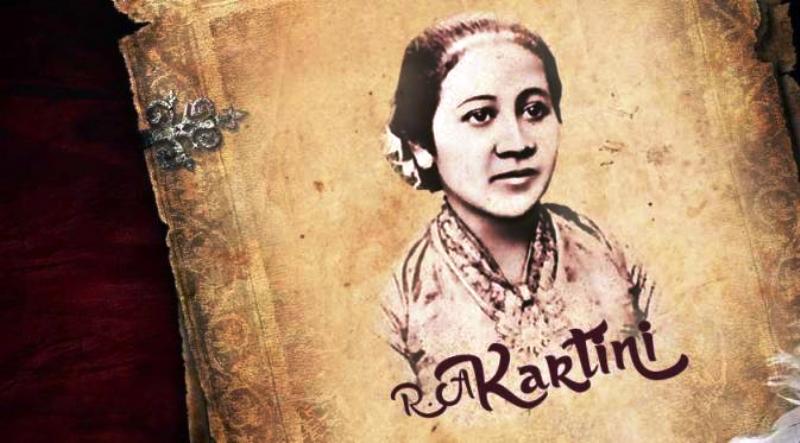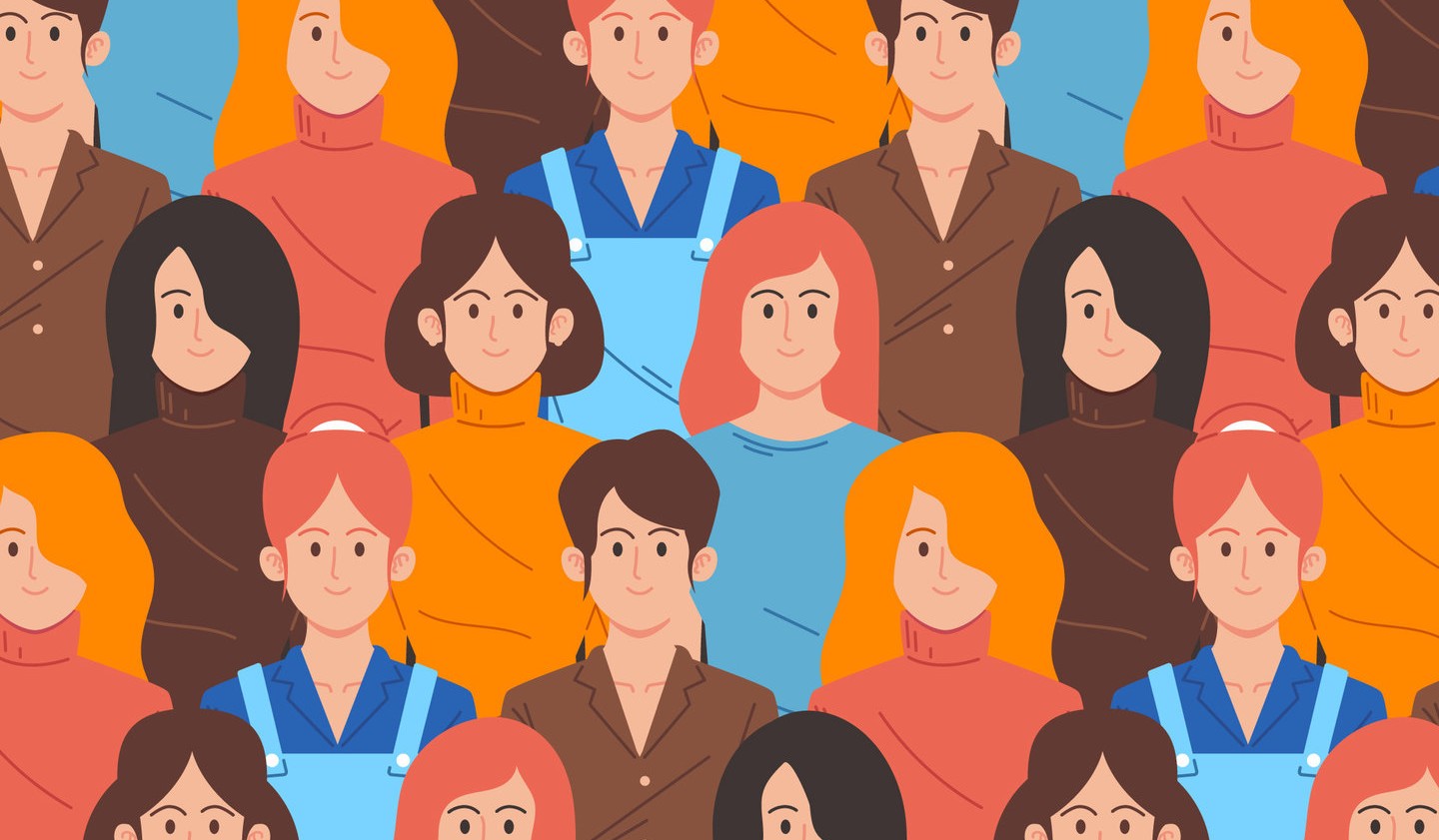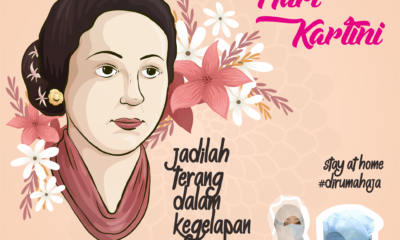News
Kartini and The History of Change in Indonesia
Published
8 years agoon
By
Mitra Wacana
By Arif Sugeng Widodo*
Kartini is a national figure and recorded as the initial generation of movers towards emancipation in Indonesia; she has an important role in Indonesian history pre and post independence. Kartini’s role can not only be seen in thinking about justice and gender equality but also in the efforts to question nationality and occupation. Motion thinking was not something simple in her era. As a Javanese woman who was bound by the rules of culture, Kartini appeared in the realm of thought that far exceeded her time, especially in Indonesia. The letters he wrote to her Dutch friends showed how Kartini already had extensive access that not everyone at the time did. The turmoil of her soul and heart opened thinking space for her to discuss with her Dutch friends.
In the history of Indonesia, Kartini is a female character that is interesting to study, let alone Kartini appeared in the era of feudalism and when modern imperialism began to appear. Kartini brought the concept of progress and freedom into the realm of thought and the development of Indonesia and she was very concerned about the education of her people. Kartini created an unforgettable time record for Indonesia which indirectly or directly layed the foundations of thought and movement to changes in the development of Indonesia both as a country and its cultural inflences. Kartini was a futuristic figure of her era with the view that the Indonesian nation could advance through education. So it becomes important not only to view Kartini as a figure of emancipation but also as a forward thinker who could see how important changes in the present (in her time) would influence and shape the future. And Kartini believed education was the answer. She no doubt promoted education in Indonesia. Not only with real efforts but also with ideas that were expressed in her letters.
The Indonesian struggle for independence did not happen immediately, there was a long process before independence was achieved. The process was not easy or straight forward, it was long and winding. Many national figures played a role in independence either directly or indirectly. The struggle against the Dutch occured in several stages and forms until finally independence could be taken. Insurgencies against the Dutch took place since they colonised Indonesia. The struggle against the Dutch tended to be local, occurring partially and with varying motivations. There were many leaders in that time, including Prince Diponegoro, Prince Hasanuddin, Tuanku Imam Bonjol, Teuku Umar, Pattimura, even an Achenese women named Njut Nyak Dien. The fight with arms raised in that day was the most appropriate and feasible step. The history books explain the fight against the Dutch of the various figures who were diverse however the desire to not be colonized by foreign nations still blazed in hearts of the warriors.
In the beginning of the 1900s the approach to the struggle began to shift slightly, a diplomatic approach through organizations became the movement of choice. Many organizations formed from various regions in Indonesia. Until finally in 1928 a congress known as Soempah Youth was held by various organizations. It was known as the oath of youth because it was driven by various youth organizations. Not only were youth organizations formed at the beginning of the 1900s but also Islamic organization such as Muhammadiyah and also Syarikat Islam, and another very famous organization, Boedi Oetomo. Various organizations emerged as the forerunners of a new approach to the struggle for independence. These organizations despite being numerous and geographically separated formed a strong movement that was noticed by the Dutch.
Besides Soempah Youth, in 1928 other historical events occurred that were no less important in influencing Indonesian independence. The First Women’s Congress was conducted in Yogyakarta. Congress was attended by various women’s organizations who felt called to be involved in discussing the various issues raised in that time. Some of these organizations included Aisjijah, Boedi Rini, Boedi Wanito, Darmo Laksmi, Jong Java, Natdatoel Fataat, Wanito Kathoeliek, Wanito Taman Siswa and poetri mahardika. The number of women’s organizations involved in the congress showed how women in that era had already developed a view of their surrounding conditions.
The desire among women to organize and promote unity among women’s organizations started developing in the 1920s. That trend began to be seen also in Sumatra in 1926 with the formation of the western Sumatra women’s federation that had its own monthly magazine in the Malay language (Blackburn, 2007: xxii).
The desire of women to participate actively in the fields of education and society was a very powerful thing. Even with various limitations and obstacles, the first women’s conference was a success. The interesting thing is the various different organizations that contributed to the success of the meeting included Islamic women’s organizations. The belief that women’s role could be broader than just the kitchen, wells and mattresses are always reproduced by patriarchal culture. This is similar to what is disclosed by Musdah Mulia that the position of women is equal in God’s creation, “The Prophet changed the position and status of women from objects to be humiliated and abused to subjects that must be respected and heeded. This changed the subordinate, marginal and inferior position of women to be on par and equal with men. The Prophet proclaimed the unity of humanity, that women are equal with men. Both are equally God’s creation, equally human, equality has the potential to become caliph fi al-ard (managing life on Earth)” (Mulia, 2008: 22).
The emergence of various organizations at the beginning of the 1900s was not free from the ethical policies of the Dutch government at the time. Indigenous people were given limited access education although only for nobility and gentry. The highborn had access to education provided by the Dutch government, including learning the Dutch language, some people even studied in the Netherlands. Learning opportunities and access to education ultimately opened up horizons of the Indonesian youth’s fight for independence and questioning their colonization. This ethical politics indirectly was the entrance into a new era of renewed struggle for Indonesia as an independent nation. The children of the gentry and nobility took various alternative professions to their parents as the ruling elite of Java.
“After 1900 appeared a group called new aristocracy, most of them are young people from the indeigenous bureaucracy (Pangreh Praja) who took advantage of wider opportunities to acquire advanced Western education. It was the period of ethical politics, when people payed attention to the physical and spiritual “development” of the indigenous population. Young people were often dissatisfied with the modesty of the elite government of Java. They did not want to follow in the footsteps of their parents. Education offered them new possibilities. They chose positions in other areas of the Dutch government at the beginning of the century: government office clerks, teachers, teachers of agriculture, government doctors, translators, irrigation supervisory agencies or public works agencies and so on” (Meirt, 2003: 3).
Before the widespread movement of organizations that emerged in the early 1900s, in the late 1800s, Kartini appeared as a reform figure for the Indonesian struggle. She was born into a noble family on 21 April 1879 in Mayong Jepara. Kartini was what can be called the first space opener for the struggle movement through various organizations that began to emerge. It is interesting to observe what is said by Pramoedya Ananta Toer about Kartini.
“Kartini was the first person in the history of Indonesia who ended the Middle Ages, the era of “sickly” native feudalism, in the words of Bung Karno. In indigenous history, this was the beginning of the end of Dutch-style colonization of Indonesia and the start of a new round of colonial history; modern imperialism” (Toer 2009: 12).
New colonialism, so-called “modern imperialism”, was also confronted with a new movement through organizations that began mushrooming after the death of Kartini. Kartini was called a reformer because of her thoughts about the emancipation of women. Although Kartini not only questioned injustice and gender equality but also the fairness of the Dutch nation against her nation (Java).
“In her letters, Kartini referred to Java as a people more than she referred to it as a nation. However, according to the authors, this phenomenon is enough to show how Kartini at a young age and living in a confined environment was able to see Java as a nation, not just a dispised Dutch colonial rabble (Arbaningsih, 2005: 3). Various readings she got from the Dutch helped her understand the surrounding reality. This is what she expressed through letters to her friends in the Netherlands. These letters were important notes of Kartini’s thoughts at that time – people of her era, especially Javanese women, were still attached to patriarchal culture.
There is an interesting story about Kartini that could be a lesson. When Kartini got the news that she won a scholarship of F. 4,800 (four thousand eight hundred guilders) to the Netherlands ahead of her wedding, she did not want the scholarship so she nomitated Agus Salim to replace her (Kowani, 1978: 8). It shows how Kartini had to sacrifice her schooling but she wanted to give the opportunity to seek knowedge to other indigenous people. Kartini made a tremendous sacrifice by not taking up the scholarship. Kartini wished she could show that not only men but also women can get an education. Even though Kartini chose not to take the scholarship and followed her parents wishes for her to marry the regent of Rembang, she still believed that education was the way of liberation from oppression.
Another thing that is important to note is Kartini’s efforts not only influenced the struggle for Indonesian independence but also cultural change to the view that women, especially Javanese women, were instrumental in the domestic realm. Although Kartini herself could not be completely free from the shackles of patriarchal culture, her efforts were the first step of long-term change that is felt to this day. Education she advocated could eventually change the cultural view of women as subordinate. With education, women could see another world which was new to them at the time. Her focus on education was seen in her letter to her friend in the Netherlands, namely Mrs R.M. Abendanon-Mandri, dated 21 January 1901. The letter says; “It has been a long time and I have been thinking a lot about education matters, especially lately. I view education as a noble and holy obligation, so in my view it is an offense if without perfect skills I dare hand over power to a case study. Firstly, it must be proved whether I am capable of being an educator. For me, education is the formation of the mind and soul. Oh dear, if I ever become a complacent teacher, I would feel unable to do my job as I must to be a good educator, for example people won’t feel satisfied by me either. I feel that, by developing the mind alone the task of educators is not finished, an educator may also have to maintain the formation of character, although there is no legal requirement of that task. Morally the teacher is obliged to do so. And I asked myself: Can I do this task? Do I still need such education myself? Often I hear people say, that from what one has with oneself will arise with another. The development of reason with oneself will be subtle, sublime (Kartini, 2014: 120-121).
In Kartini’s time a few schools started to appear, which was the impact of the ethical policy implemented by the Dutch. In 1894 the first school for Indonesians appeared, called primary school and secondary school (which eventually was called standard school). A limited number of students were enrolled in ELS school (Europeeshe Lagere School). Improvements in education were a pillar of the ethical policy directed towards the people of Indonesia. Education was the most important thing in ethical politics (Maters, 2003: 48).
Another interesting point about what Kartini fought for is that her efforts not only affected the freedom struggle but also the struggle for women’s rights. It changed the cultural perception of the role of women from the domestic to the public role. At the time of Kartini’s life, the feudal system was still very strong, so strong patriarchal culture dictated good behaviour for men and women. The patriarchal culture made women subordinate second-class beings who did not have their own authority.
Human history records that at one time women started to be defined based on their physical nature, minds and their daily life. As for men, they increasingly distanced themselves from “nature” and began to define themselves (supported by some women too!) in the rules of the culture! Furthermore, in a domesticated environment, womanhood was limited to the family and household. The minds, culture and psyches of women were treated as if nonexistant. Women were increasingly disconnected from the political dimension; and even if they had appeared on the stage of public life, they became a social “problem” that needed to be dealth with! Situations like this made women difficult to separate from the figure of men; and even emptied them of the basics of humanity” (Susanto, 2000: 10).
Kartini’s thoughts actually affected the mindset of the Indonesian nation. Her efforts to change the fate of the nation through education significantly influenced the direction of the future Indonesian struggle. Not only that, through her thinking on education, the various cultural norms and discrediting of women was slowly changing. She certainly had an amazing mind for her era. Kartini was forward thinking and protested about the situation of the occupied nation. Kartini’s struggle had not only a single effect but diverse positive impacts.
Her thoughts on education and women’s rights encouraged other women to be actively involved in education and society and even political movements in the early 1900s. Kartini’s struggle can today be called an emancipation movement that turned into a national movement for the Indonesian nation. Equality, justice and gender equality caught the government’s attention and become one of the country’s programs. As Soekarno wrote in his book about women, entitled Sarinah, “Do men think that something can be planted in a culture, that women are humiliated. Half of the history experts determined that the culture of the Greeks fell, because women were humiliated in that culture. Nazi-German fell, because in Nazi-German women were considered to be good for kirche hanja-Kleider-Kinder-Kuche. And since the culture of Islamic societies (not Islam!) also puts women in a lesser place, the sun goes down on Islamic culture making it a little gloomy!” (Sukarno, 1963: 17).
Kartini is a symbol of women’s struggle to break free from captivity, ignorance and rigid social systems. With her thoughts Kartini opened up the horizons of the Indonesian people, not only women but also men, that women can give their best when the opportunity is there. Kartini’s thoughts brought the spirit of progress, freedom and change for the future. Kartini indirectly changed the past full of darkness towards a future filled with light. So it is fitting the book entitled “Out of Darkness to Light” was aimed at her. Kartini’s thoughts were ahead of her time, especially in Indonesia.
* The author is Master of Philosophy candidate at Universitas Gadjah Mada in Yogyakarta, Indonesia
You may like
News
Apakah Perempuan Amerika dan Indonesia Sangat Berbeda?
Published
4 years agoon
18 February 2020By
Mitra Wacana
oleh Jacqueline Lydon – Volunteer di Mitra Wacana
Saya tumbuh dan besar di Amerika, saat ini tinggal di Indonesia sudah lima bulan, dan sudah tiga bulan ini magang di Mitra Wacana, saya terkejut ternyata adanya kesamaan kondisi antara perempuan di Indonesia dan Amerika.
Kalau dilihat sekilas, perempuan Amerika dan Indonesia mungkin memiliki perbedaan yang sepenuhnya berlawanan.
Saat membandingkan keduanya, biasanya orang-orang fokus pada perilaku dan penampilan perempuan. Perempuan dihakimi tentang cara mereka berpakaian, cara mereka bertindak, dan betapa independennya mereka, misalnya.
Orang Amerika mungkin menilai perempuan Indonesia berpakaian konservatif, tinggal di lingkungan rumah tangga, dan tampaknya tunduk pada suami mereka. Sementara itu, orang Indonesia mungkin menilai perempuan Amerika tidak menutupi tubuh mereka, merangsang secara seksual, tidak fokus pada peran domestik, atau terlalu keras dan menuntut.
Apa yang saya catat sejak berada di sini adalah yang pertama, bahwa perbedaan-perbedaan ini kurang terlihat daripada yang saya pikirkan, dan kedua, bahwa mereka tampaknya berasal dari budaya dan norma sosial yang berbeda. Ada berbagai cara untuk memahami gender dan peran gender, namun perempuan di Amerika dan Indonesia menginginkan keamanan, rasa hormat, dan memiliki suara.
Ada banyak kesamaan antara perilaku dan masalah perempuan di kedua negara.
- 51,9% perempuan Indonesia adalah pekerja, dibandingkan dengan 57,1% perempuan Amerika.
- 17,4% dari parlemen Indonesia adalah perempuan, dibandingkan dengan 23,9% dari legislatif Amerika.
- Perempuan Indonesia terpilih pertama kali sebagai presiden pada tahun 2001, sementara belum ada seorang perempuan yang pernah menjadi presiden di Amerika.
- Perempuan pertama yang bergabung dengan mahkamah agung Indonesia, Sri Widoyati Wiratmo Soekito, dilantik pada tahun 1968, sedangkan perempuan pertama yang bergabung dengan mahkamah agung Amerika adalah Sandra Day O’Connor pada tahun 1981, sekitar 15 tahun kemudian.
Ada banyak masalah — dari pelecehan seksual hingga pemerkosaan — yang memiliki dampak luas pada perempuan di kedua negara, tetapi sulit untuk memiliki statistik yang akurat karena banyak perempuan tidak (atau tidak bisa) melaporkan insiden ini. Tetapi berdasarkan apa yang dilaporkan, jelas bahwa ini adalah masalah utama di kedua negara.
- 3 dari 5 perempuan Indonesia dan 81% perempuan Amerika telah mengalami pelecehan seksual
- 15% perempuan Indonesia dan lebih dari 1 dari 3 perempuan Amerika melaporkan menjadi korban kekerasan seksual atau pemerkosaan
- 16% perempuan Indonesia dan sekitar 25% perempuan A.S. telah melaporkan menjadi korban kekerasan pasangan intim (kekerasan fisik, seksual, atau psikologis dari pacar atau pasangan)
Dua negara dengan sikap dan perilaku perempuan dilihat sangat berbeda, mengejutkan bahwa ada persamaan keberhasilan dan perjuangan perempuan.
Baru tahun lalu, sebuah jajak pendapat di Amerika menemukan bahwa hanya 29% perempuan Amerika yang mengidentifikasi sebagai feminis. (Feminis: seorang yang percaya laki-laki dan perempuan harus punya hak sama). Di kedua negara, ada gerakan feminis dan anti-feminis (di Amerika, “meninism”; di Indonesia, “Indonesia tanpa feminisme”). Dalam kedua gerakan tersebut, suara perempuan ditekan; perempuan yang mengadvokasi diri mereka sendiri sering dianggap terlalu menuntut, dan masalah mereka diabaikan.
Mengapa ada begitu banyak penilaian untuk pilihan perempuan di kedua negara?
Sebagian dari hal tersebut didasarkan pada stereotip, yang terus dibangun tentang perempuan yang bertindak berbeda. Perempuan di setiap negara diajarkan bahwa peran budaya, perilaku, dan nilai-nilai mereka adalah pilihan yang lebih baik, dan jika mereka berpegang teguh pada itu, mereka akan menghindari masalah yang dihadapi oleh perempuan dalam budaya yang berbeda. Misalnya, untuk perempuan di Amerika, diajarkan bahwa menjadi lebih asertif akan membantu mereka mencapai lebih banyak perwakilan politik, dan perempuan di Indonesia diajarkan bahwa berperilaku sopan akan membantu mereka menghindari kekerasan atau pelecehan seksual. Namun kesamaan dalam statistik membuktikan bahwa bukan perilaku perempuan yang menyebabkan masalah ini, dan nasihat budaya untuk perempuan tidak akan menyelesaikan masalah.
Tentu saja, tidak ada jawaban sederhana untuk masalah sistemik ini. Tapi, penyebab utama seksisme di seluruh dunia adalah patriarki — sistem yang telah dibangun untuk memperkuat laki-laki dan memperlemah perempuan. Sistem patriarki inilah yang telah menciptakan gagasan menyalahkan korban — untuk menghakimi dan menyalahkan perempuan atas penindasan yang mereka alami alih-alih sistem yang menyeluruh.
Daripada melihat pilihan perempuan atau menilai mereka, kita harus melihat sistem patriarki yang lazim di kedua negara.
Menurut saya, kita perlu berhenti fokus pada perilaku perempuan dan sebaliknya fokus pada cara masyarakat menilai dan menindas semua perempuan, dan kemudian kita harus membangun solidaritas untuk memecah sistem itu. Cita-cita bagaimana seorang perempuan seharusnya dan harus bertindak mungkin berbeda di kedua budaya, tetapi hal yang universal bahwa perempuan harus bebas dari kekerasan dan diperlakukan dengan bermartabat dan hormat.
Editor: Arif Sugeng W













